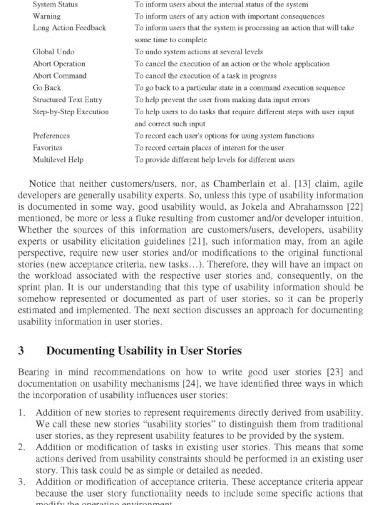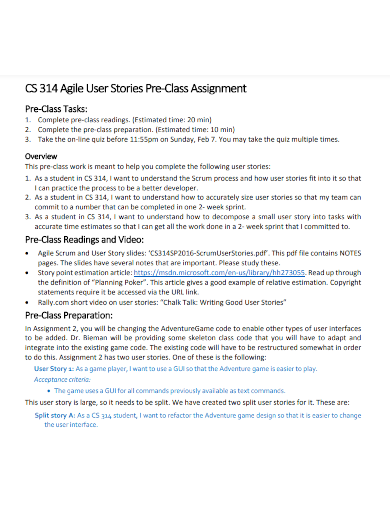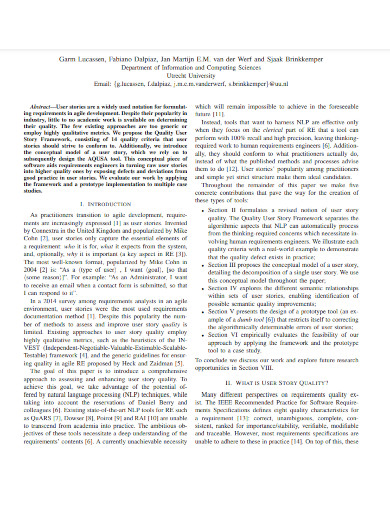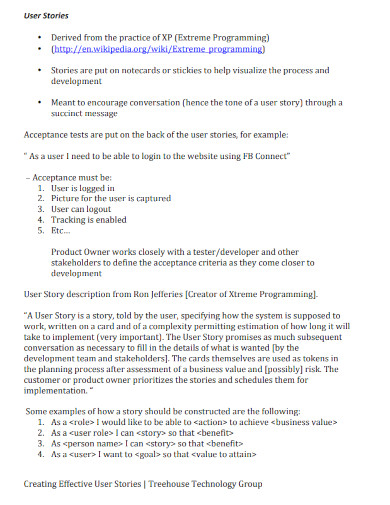3+ Agile User Story Samples
It’s all too easy to mistake user stories for software system requirements. They aren’t, though. People come first in agile software development, and a user story places the end user at the center of the dialogue. The development team and their efforts are described in these anecdotes using non-technical language. User stories are an important part of every agile project. Need some help with creating an agile user story? We’ve got you covered! In this article, we provide you with free and ready-made samples of Agile User Stories in PDF and DOC format that you could use for your benefit. Keep on reading to find out more!
1. Agile User Stories Enriched with Usability
2. Agile User Stories Pre Class Assignment
3. Forging High-Quality Agile User Stories
4. Creating Effective Agile User Stories
What is an agile user story?
In an agile system, a user story is the smallest unit of work. It’s a purpose, not a feature, conveyed through the eyes of the program user. A user narrative is a short, informal description of a software feature written from the viewpoint of the end user or customer. A user story’s objective is to describe how a piece of work will provide a specific value to the client. User stories are a few brief lines that describe the intended outcome. They aren’t really specific. Requirements are introduced when the team has agreed on them.
How to make an agile user story
User stories also serve as the foundation for bigger agile frameworks like as epics and initiatives. An Agile User Story Template can help provide you with the framework you need to ensure that you have a well-prepared and robust user story on hand. To do so, you can choose one of our excellent templates listed above. If you want to write it yourself, follow these steps below to guide you:
#1. Create a list of user tales.
This is the initial and maybe most important step. You should first determine who your product’s end consumers are before developing a User Story. Also, what are their wants, which you are attempting to meet?
#2. Define the features that each user expects.
In most circumstances, the user narrative defines an end-state: when the user completes the job or achieves the goal. When you write yours, keep this end-state in mind so that the rest of your team understands when they may designate the development effort as complete.
#3. Write down the tasks and subtasks
Despite your real user narrative will just have the basic statement stated above, you will need to capture the specifics necessary to perform the development activity indicated in the tale. This entails laying up tasks and subtasks and allocating them to the appropriate persons.
#4. Create tales in a sequential manner.
The idea behind user story mapping is that you may view of your whole product as a sequence of activities or occupations that your users are aided in completing. With this in mind, write each self-contained phase as a story if you’re seeking to structure work on a broader process or a more comprehensive set of product capabilities.
#5. Seek input from users.
Talk to users and consumers about their priorities and what more they want from your products to boost your chances of allocating resources to development activities that will connect with your market. You should only begin writing user stories after obtaining and analyzing this input.
FAQ
What exactly is the distinction between a user narrative and a use case?
User Stories are more focused on the outcome and benefit of the item being described, whereas Use Cases are more detailed and describe how your system will behave.
What should be included in a user story?
User stories are part of an agile methodology that helps move the focus from writing to communicating about needs. A few written sentences and, more crucially, a series of dialogues about the needed functionality are included in every agile user stories.
What is the significance of user stories?
User stories are used in agile software development to express the value of a product feature and to gain a deeper understanding of why consumers want a certain feature.
By requiring you to make one simple adjustment to your approach to development planning, user stories help your team do all of this – and produce better products. To help you get started, download our easily customizable and comprehensive samples of Agile User Stories today!
Related Posts
Sample Material Lists
Sample Excuse Letter for School
Feature Writing Samples
FREE 14+ Sample Music Concert Proposal Templates in MS Word | Google Docs | Pages | PDF
FREE 10+ Security Guard Contract Samples in PDF | MS Word
FREE 10+ Assurance Agreement Samples In MS Word | Google Docs | Apple Pages | PDF
FREE 10+ Option to Purchase Agreement Samples in MS Word | Apple Pages | PDF
FREE 26+ Curriculum Form Samples in MS Word | PDF
FREE 20+ Cleaning Service Proposal Samples in PDF | MS Word
FREE 29+ Sample Loan Application Form Templates in MS Word | PDF
FREE 10+ Event Venue Contract Samples in PDF | MS Word | Pages | Google Docs
FREE 10+ SBAR Samples in PDF | DOC
FREE 12+ Music Band Contract Templates in PDF | MS Word
FREE 10+ HVAC Maintenance Contract Samples in PDF | MS Word
FREE 10+ Social Media Marketing Contract Samples in MS Word | PDF




